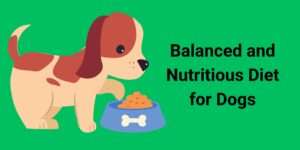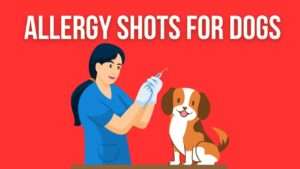Parvovirus is a highly contagious viral infection that affects dogs, particularly puppies and unvaccinated dogs. It’s a serious illness that can lead to severe symptoms and even death if left untreated. Understanding Parvovirus and its implications is crucial for every dog owner to protect their furry companions.
Contents Overview
What is Parvovirus?
Parvovirus, specifically Canine Parvovirus (CPV), is a highly contagious virus that primarily affects dogs. It’s part of the Parvoviridae family and has several variants, including CPV-2a, CPV-2b, and CPV-2c. Among these, CPV-2b is the most prevalent strain.
Origins of Parvovirus: Tracing the Roots
- Parvovirus in dogs, scientifically known as canine parvovirus type 2 (CPV-2), emerged in the late 1970s, wreaking havoc among dog populations worldwide.
- It belongs to the family Parvoviridae and is a close relative of feline parvovirus and other related viruses.
- The virus primarily targets the gastrointestinal tract, leading to severe enteritis (inflammation of the intestines) and can also affect the heart muscles in puppies.
Common Symptoms:
Recognizing the signs of parvovirus can aid in prompt diagnosis and treatment. Here are the typical symptoms:
- Gastrointestinal Distress:
- Severe vomiting
- Profuse diarrhea, often bloody
- Loss of appetite and reluctance to eat or drink
- Dehydration:
- Excessive thirst
- Dry, tacky gums
- Sunken eyes
- Lethargy and Weakness:
- Fatigue
- Lethargic behavior
- Weakness or reluctance to move
- Fever:
- Elevated body temperature (above 103°F or 39.4°C)
- Weight Loss:
- Noticeable loss of weight due to decreased appetite and vomiting
Symptoms Progression:
The progression of symptoms can vary, but typically follows a pattern:
- Initially, dogs may display mild symptoms such as lethargy and decreased appetite.
- As the virus proliferates, gastrointestinal distress intensifies, leading to severe vomiting and bloody diarrhea.
- Without prompt intervention, dehydration and weakness worsen, potentially resulting in shock and death.
High-Risk Groups:
While all dogs are susceptible to parvovirus, certain groups face higher risks:
- Puppies: Young, unvaccinated puppies are particularly vulnerable due to their immature immune systems.
- Unvaccinated Dogs: Dogs lacking proper vaccination are at increased risk of contracting parvovirus.
- Stressed or Immunocompromised Dogs: Stress, poor nutrition, or underlying health conditions can weaken the immune system, rendering dogs more susceptible to infections.
Understanding Parvovirus Transmission
Parvovirus, scientifically known as Canine Parvovirus (CPV), is a resilient and tenacious virus that primarily affects dogs, especially puppies. Understanding how this virus spreads is crucial in preventing its transmission and protecting vulnerable pets.
Modes of Transmission:
- Direct Contact: Parvovirus is typically transmitted through direct contact with an infected dog’s feces. This can occur when dogs sniff or lick contaminated surfaces or come into contact with infected fecal matter in the environment.
- Indirect Contact: The virus can also spread indirectly through contact with contaminated objects, such as food and water bowls, toys, bedding, and even the clothing or shoes of individuals who have handled infected dogs.
- Ingestion: Dogs can become infected with parvovirus by ingesting contaminated feces, soil, or other materials that harbor the virus. Once ingested, the virus quickly replicates in the gastrointestinal tract, causing severe illness.
Risk Factors for Transmission:
- Unvaccinated Dogs: Puppies and adult dogs that have not been vaccinated against parvovirus are at the highest risk of infection.
- Crowded Environments: Places such as shelters, kennels, dog parks, and pet stores where dogs congregate are hotspots for parvovirus transmission.
- Poor Hygiene Practices: Failure to regularly clean and disinfect living areas, food and water bowls, and other pet-related items can contribute to the spread of the virus.
- Stress and Immune Suppression: Stressful situations, such as moving to a new home or undergoing surgery, can weaken a dog’s immune system, making them more susceptible to parvovirus infection.
Preventing Parvovirus Transmission
Prevention is key when it comes to protecting dogs from parvovirus. By implementing proactive measures, pet owners can significantly reduce the risk of transmission and keep their furry friends safe.
Vaccination:
- Ensure that puppies receive a series of vaccinations starting at around 6-8 weeks of age, with boosters administered every 3-4 weeks until they are around 16 weeks old.
- Adult dogs should receive regular booster vaccinations to maintain immunity against parvovirus.
Hygiene and Sanitation:
- Clean and disinfect living areas, food and water bowls, toys, and other pet-related items regularly with a veterinary-approved disinfectant.
- Promptly remove and dispose of feces from your yard or designated potty area to prevent contamination.
Limit Exposure:
- Avoid high-risk environments, such as dog parks and kennels, especially if your dog is unvaccinated or immunocompromised.
- Practice responsible pet ownership by keeping your dog on a leash and under supervision when outdoors.
Early Detection and Treatment:
- Familiarize yourself with the signs and symptoms of parvovirus, which include vomiting, diarrhea (often bloody), lethargy, loss of appetite, and fever.
- If you suspect that your dog may have parvovirus, seek veterinary care immediately. Early diagnosis and supportive treatment can greatly improve the chances of recovery.
Impact on Owners:
Dealing with Parvovirus can be emotionally and financially draining for dog owners. Treatment costs can be substantial, and the emotional toll of seeing a beloved pet suffer can be significant. Moreover, the potential for spread to other dogs in the household or community adds to the stress.
Emotional Toll:
Dealing with Parvovirus isn’t just about managing the physical symptoms in our pets; it also takes a toll on our emotional well-being:
- Fear and Anxiety: The mere possibility of our furry companions contracting Parvovirus can instill fear and anxiety in pet owners, especially those with young or unvaccinated dogs.
- Guilt and Self-Blame: Owners may experience feelings of guilt or self-blame if their pet contracts Parvovirus, questioning whether they could have done more to prevent it.
- Stress and Uncertainty: Managing a pet diagnosed with Parvovirus can be incredibly stressful and emotionally taxing, as owners grapple with uncertainty about their pet’s prognosis and treatment outcomes.
Practical Challenges:
Beyond the emotional turmoil, Parvovirus presents a slew of practical challenges for dog owners:
- Financial Strain: Treating Parvovirus can be financially draining, with hospitalization, medications, and supportive care costs quickly adding up.
- Isolation and Quarantine: Owners of infected dogs must adhere to strict isolation and quarantine protocols to prevent the spread of the virus, often requiring them to separate from their pet for an extended period.
- Disruption to Daily Life: Managing a pet with Parvovirus can disrupt normal routines and activities, requiring owners to devote significant time and attention to their pet’s care and recovery.
Diagnosis and Treatment
Diagnostic Steps
Diagnosing Parvovirus typically involves a combination of clinical signs, physical examination, and laboratory tests. These tests may include fecal analysis, blood tests, and sometimes imaging studies like X-rays or ultrasounds.
Prompt veterinary evaluation is crucial if parvovirus is suspected. Diagnostic steps may include:
- Clinical Symptoms: Identifying typical signs such as severe vomiting, bloody diarrhea, lethargy, and loss of appetite.
- Laboratory Tests: Diagnostic tests like fecal ELISA (enzyme-linked immunosorbent assay) to detect viral antigens in feces confirm the presence of parvovirus.
- Complete Blood Count (CBC): Blood tests reveal leukopenia (low white blood cell count) and lymphopenia (reduced lymphocyte count), typical in parvovirus infections.
Treatment and Management:
Treatment of Parvovirus is intensive and often requires hospitalization. It focuses on supportive care to manage symptoms and prevent complications. This may include fluid therapy to address dehydration, medications to control vomiting and diarrhea, and nutritional support.
Effective treatment of parvovirus typically involves intensive care and supportive measures, including:
Treatment focuses on managing symptoms, preventing dehydration, and supporting the immune system to combat the virus effectively.
- Hospitalization: Immediate hospitalization is crucial to provide intensive care and isolation to prevent the spread of the virus.
- Fluid Therapy: Intravenous fluids to correct dehydration and electrolyte imbalances caused by severe vomiting and diarrhea.
- Anti-nausea Medications: Administering anti-emetics helps control vomiting, easing discomfort and preventing further dehydration.
- Antibiotics: Prescribing broad-spectrum antibiotics to prevent secondary bacterial infections due to weakened immune systems.
- Nutritional Support: Providing easily digestible, high-energy foods or liquid diets to maintain nutrition and aid recovery.
- Blood Transfusion: In severe cases, blood transfusions may be necessary to replace lost blood cells and improve outcomes.
Preventive Measures:
Allergies in dogs are a common and often misunderstood condition that can significantly impact a dog’s quality of life.
Types of Allergies
- Vaccination:
- Vaccination stands as the cornerstone for preventing Parvovirus. Puppies should receive a series of vaccinations starting at around 6-8 weeks of age, with boosters administered every 3-4 weeks until they are 16 weeks old.
- Adult dogs should receive regular booster shots to maintain immunity against Parvovirus. Consult with a veterinarian to establish an appropriate vaccination schedule tailored to your dog’s needs.
- Isolation and Quarantine:
- Since Parvovirus spreads rapidly in environments where dogs congregate, it’s crucial to isolate infected or potentially exposed dogs.
- Quarantine measures should be implemented for at least two weeks after symptoms subside, as the virus can persist in the environment for an extended period.
- Hygiene and Sanitation:
- Thoroughly clean and disinfect all areas frequented by infected dogs, including bedding, toys, food and water bowls, and living spaces.
- Use a bleach solution (1 part bleach to 32 parts water) or other disinfectants recommended by veterinarians to effectively kill the virus.
- Limiting Exposure:
- Avoid bringing unvaccinated puppies or dogs of unknown vaccination status to places where Parvovirus may be present, such as dog parks, pet stores, or grooming facilities.
- Exercise caution when introducing a new dog into the household, ensuring that they are adequately vaccinated and healthy.
- Nutrition and Immune Health:
- Provide a balanced diet rich in essential nutrients to bolster your dog’s immune system, aiding in their ability to fend off infections.
- Avoid feeding raw or undercooked meat, as it may increase the risk of exposure to Parvovirus and other pathogens.
Bottom Line
Parvovirus poses a significant threat to the health and well-being of dogs, particularly puppies and unvaccinated dogs. Understanding the transmission, symptoms, diagnosis, treatment, and prevention of Parvovirus is essential for every dog owner. By taking proactive measures such as vaccination, proper hygiene, and avoiding contaminated environments, owners can help protect their furry companions from this potentially deadly virus. Early recognition and prompt veterinary care are key to improving outcomes for dogs affected by Parvovirus.




































+ There are no comments
Add yours